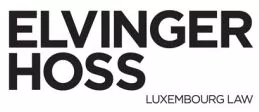- within Finance and Banking topic(s)
- with Senior Company Executives and HR
- in United States
- with readers working within the Accounting & Consultancy, Banking & Credit and Securities & Investment industries
In today's private equity landscape, traditional exit routes are narrowing. IPO windows remain constrained, M&A pipelines fluctuate unpredictably, and the once-standard five-to-seven-year buyout cycle increasingly collides with the reality that top-performing assets often need more time to realize their full potential.
Against this backdrop, continuation funds have rapidly moved from a niche solution to a mainstream tool for managers seeking both flexibility and value preservation. Yet the most effective continuation funds today go far beyond simply rolling over a prized asset into a new vehicle. They have become strategic instruments designed to reset governance, realign stakeholders, and unlock liquidity options when conventional fund structures fall short.
And nowhere is this evolution more visible than in Luxembourg, which has become the jurisdiction of choice for managers and investors navigating these complex transactions. Its combination of flexible fund structures, established regulatory framework, and global credibility make it uniquely well-suited for continuation funds.
Continuation funds as strategic problem-solvers
The continuation fund of 2025 is less a product than a solution-oriented platform. Forward-looking managers are increasingly deploying them to:
- Balance time and value: Extending the runway for assets with significant operational upside when the original fund's life is expiring.
- Reset governance: Introducing clearer oversight, recalibrated waterfalls, and improved reporting frameworks that satisfy investor expectations.
- Enable seamless transitions: When a stressed or aging fund requires a new steward, continuation funds provide a credible, investor-friendly mechanism for change without forcing LPs into binary decisions.
The hallmark features of successful continuation funds remain constant: speed of execution, transparent processes backed by robust documentation, and investor choice through flexible liquidity options—rollover, cash-out, or a hybrid approach.
Valuation and conflicts of interest: the central challenge
Alongside governance and liquidity, the most sensitive issue in any GP-led secondary is the valuation of the assets and the management of inherent conflicts of interest. The GP is effectively on both sides of the table—selling assets from one vehicle and buying them into another—which raises acute concerns for LPs. To safeguard fairness, market best practice now relies on independent third-party valuations, fairness opinions, and conflict management frameworks that include LPAC consultation, competitive or auction-style processes, and enhanced disclosure of methodologies and assumptions. Luxembourg documentation often integrates mechanisms such as: (i) price-adjustment clauses linked to capital increases or insolvency events, (ii) expert determinations by independent auditors where valuations diverge significantly, and (iii) contractual covenants ensuring transparency and timely delivery of portfolio company data. These tools collectively turn a potentially contentious process into one anchored in credibility and investor protection.
From liquidation to relaunch: a case study
A recent project illustrates the transformative potential of
continuation funds. Working with Collateral Good, we designed a
continuation fund under the form of an SCSp RAIF that allowed them
to acquire and relaunch a Luxembourg fund previously headed for
voluntary liquidation.
The process, conducted through a liquidator-led auction and backed
by nearly 85% of existing LPs, achieved several critical
objectives:
- The fund avoided a value-destructive wind-down.
- The portfolio continued to compound under a manager selected for merit, not legacy ties.
- Investors tailored their exposure, choosing the right balance between liquidity and long-term upside.
- Litigation risk decreased as stakeholders coalesced around a fair, transparent structure.
- The industrial thesis—in this case, sustainable food technologies, remained intact and fully funded.
What started as an endgame scenario became a platform for continuity, renewal, and long-term value creation.
Why Luxembourg is the natural home for continuation funds
Luxembourg's advantage lies not in a single vehicle but in the breadth and interoperability of its fund toolbox. Managers can quickly structure continuation funds using:
- RAIFs (whether SCSp tax transparent or under SA or SCA corporate forms) for speed and flexibility, marrying partnership-style features with AIFM oversight.
- Part II funds, attractive to institutional and semi-professional investors, including those seeking ELTIF-compliant strategies for long-term capital deployment.
- Umbrella and multi-compartment structures, enabling asset segregation or bespoke continuation strategies within a single legal framework.
Supporting this structural flexibility is Luxembourg's trusted operational infrastructure—from its collateral laws and depositary framework to its expertise in handling staged closings, roll/cash elections, and other complex mechanics. The combination of legal robustness and practical execution capabilities makes Luxembourg the jurisdiction of choice for LP-driven continuation fund transactions.
The future: continuation funds as core portfolio tools
Continuation funds are no longer mere stopgaps or liquidity
valves. They have evolved into strategic portfolio design tools
extending value creation horizons, giving LPs real optionality, and
keeping industrial or ESG-driven investment theses on track when
time and
capital constraints would otherwise cut them short.
As managers embrace this shift, Luxembourg offers the platform, credibility, and legal clarity to transform continuation funds from reactive solutions into proactive, value-generating strategies for the next decade.
The content of this article is intended to provide a general guide to the subject matter. Specialist advice should be sought about your specific circumstances.



